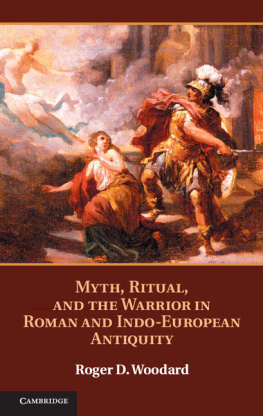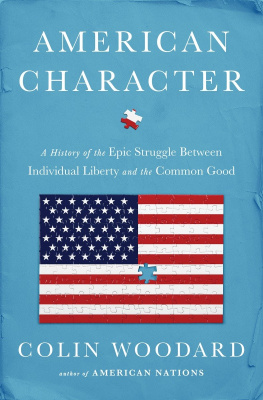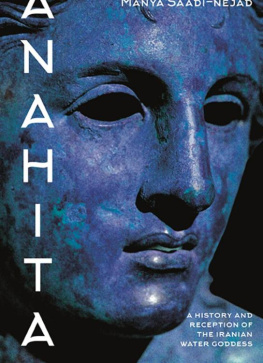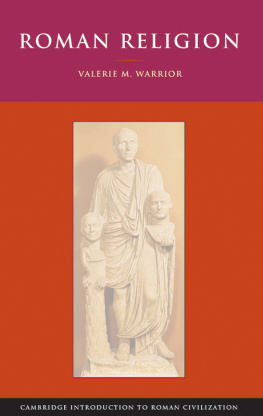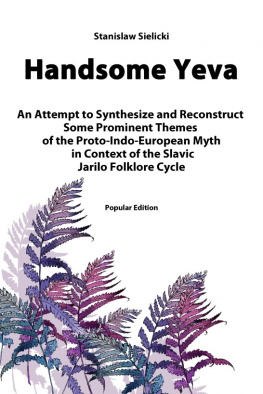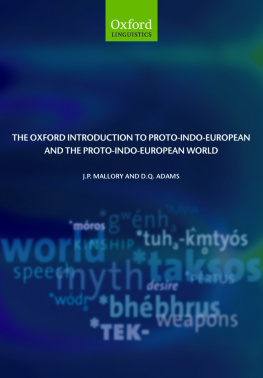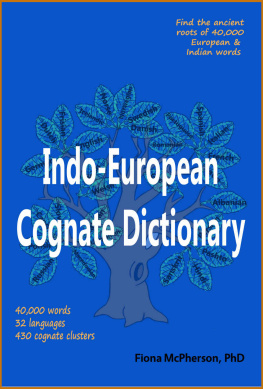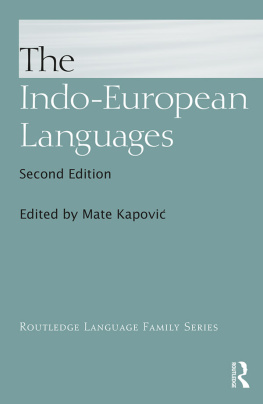
Myth, Ritual, and the Warrior in Roman and Indo-European Antiquity
Roger D. Woodard examines the figure of the returning warrior as depicted in the myths of several ancient and medieval Indo-European cultures. In these cultures, the returning warrior was often portrayed as a figure rendered dysfunctionally destructive or isolationist by the horrors of combat. This mythic portrayal of the returned warrior is consistent with modern studies of similar behavior among soldiers returning from war.
Woodards research identifies a common origin of these myths in the ancestral Proto-Indo-European culture, in which rites were enacted to enable warriors to reintegrate themselves as functional members of society. Woodard also compares the Italic, Indo-Iranian, and Celtic mythic traditions surrounding the warrior, paying particular attention to Roman myth and ritual, notably to the aetiologies and rites of the July festivals of the Poplifugia and Nonae Caprotinae and to the October rites of the Sororium Tigillum.
ROGER D. WOODARD is the Andrew van Vranken Raymond Professor of the Classics and Professor of Linguistics at the University of Buffalo, The State University of New York. His many published books include The Cambridge Companion to Greek Mythology ; Indo-European Sacred Space: Vedic and Roman Cult; Indo-European Myth and Religion: A Manual; Ovid: Fasti (with A. J. Boyle) ; The Cambridge Encyclopedia of the Worlds Ancient Languages; Greek Writing from Knossos to Homer: A Linguistic Interpretation of the Origin of the Greek Alphabet and the Continuity of Ancient Greek Literacy; and On Interpreting Morphological Change: The Greek Reflexive Pronoun .
Myth, Ritual, and the Warrior in Roman and Indo-European Antiquity
Roger D. Woodard
University of Buffalo
The State University of New York
CAMBRIDGE UNIVERSITY PRESS
Cambridge, New York, Melbourne, Madrid, Cape Town, Singapore, So Paulo, Delhi, Mexico City
Cambridge University Press
32 Avenue of the Americas, New York, NY 10013-2473, USA
www.cambridge.org
Information on this title: www.cambridge.org/9781107022409
Roger D. Woodard 2013
This publication is in copyright. Subject to statutory exception and to the provisions of relevant collective licensing agreements, no reproduction of any part may take place without the written permission of Cambridge University Press.
First published 2013
Printed in the United States of America
A catalog record for this publication is available from the British Library.
Library of Congress Cataloging in Publication data
Woodard, Roger D.
Myth, ritual, and the warrior in Roman and Indo-European antiquity / Roger Woodard.
p. cm.
Includes bibliographical references and index.
ISBN 978-1-107-02240-9 (hardback)
1. Indo-European antiquities. 2. Soldiers in literature. 3. Mythology, Roman, in literature. I. Title.
P525.W66 2013
930.04034dc23 2012007843
ISBN 978-1-107-02240-9 Hardback
Cambridge University Press has no responsibility for the persistence or accuracy of URLs for external or third-party Internet Web sites referred to in this publication, and does not guarantee that any content on such Web sites is, or will remain, accurate or appropriate.
For my father, RDW,
who was saved from the warriors fate by the accident of time and place,
and
For my mother, WOW,
who, like countless mothers before and since, knew Thetiss dread, but was spared its realization.
Preface
Particularly vivid memories surviving from a 1950s childhood are those of riding in the back seat of a 1951 Pontiac coupe, speeding along eastern North Carolina rural roads on periodic night runs from my grandparents home to my own, some fifty miles away. A thick and marvelous darkness and nocturnal stillness engulfed the car and its passengers mile after mile. Inevitably the immediacy of the sheltering blackness that wrapped the world would reluctantly and briefly recede as the car approached the lights of the small Johnston County town of Kenly. The patience demanded by a slow trawl through the deserted three or four blocks of the towns main street was rewarded by a rapid re-acceleration into deep darkness.
Some nights, however, bathed in the light of the tall street lamp that stood at the corner of Church and Second, there would be standing a man a man as brilliantly illuminated against the surrounding darkness as any actor who has ever plied the tragedizing craft beneath a spotlight in any theater gone dark. The man if he was a man and not some infernal apparition drawn to the light like the bats that flew overhead gorging on moths and he must have been a man, for he had a name let us call him B. raged like a storm. With flailing limbs and taut, arching spine he fought an enemy that none could see none but B. His face was contorted, more beastly than human, and from between corrugated lips, harshly misshapen by the fury that possessed him, there poured incomprehensible streams of screaming speech.
As the Pontiac sped on into the night, the driver my father would predictably utter, in a still voice weighted down by empathy: He was in the war he was shell-shocked.
Post-Traumatic Stress Disorder Americas military involvement in Vietnam brought it to our attention. More recent forays into the Asian world have kept it there. Its later twentieth- and twenty-first-century manifestations made many at least in America almost forget that it was a and ancient society wrestled with its consequences.
This book begins with a close examination of two ancient Roman festivals, celebrated annually on July 5 and July 7. The two are variations on a single theme, which I argue is that of the response of society to the post-combat dysfunctionality of the warrior. It is an expression of an ideology and practices inherited by the Romans from their own ancestors: the festivals are ritual realizations of a mythic motif that is widely attested among Indo-European peoples, of whom the Romans are but one. The motif is that of the rage and isolationism exhibited by the Indo-European warrior following combat: certain fundamental features characterize the ancestral mythic tradition and the Roman festivals alike features that constitute elements of the warriors experience and societys response to that experience.
Following an overview of the several Indo-European mythic traditions and of elements of Roman cult, each of these fundamental features is examined in turn over the course of six chapters, together with their various expressions in historical Indo-European cultures. The book concludes with summary and interpretative thoughts on ancestral Indo-European ritual practices and the Roman instantiations of those practices from the particular perspective preserved in, among other rites, those of July 5 and July 7.
Feast Day of St. Thomas Becket
My Lord! these are not men, these come not as men come, but
Like maddened beasts
The Priest to Becket at the approach of the Knights
T. S. Eliot, Murder in the Cathedral
Acknowledgments
Voicing ones gratitude to individuals who have provided inspiration, assistance, and support for an undertaking such as this one always elicits a certain degree of discomfort when one realizes the breadth and width of the debt and the impossibility of adequately acknowledging all deserving of such recognition. This, however, does not provide the author with an excuse to invoke non-offending silence in the matter of thanks. And so, beyond those scholars upon whose work I build, who are credited by name in the pages that follow (with apologies to any whose work I have overlooked and those whose contributions have been obscured by the passage of time), there are some particular individuals who must be singled out.

